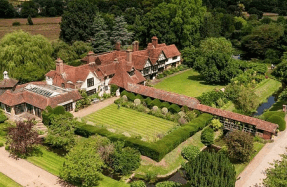The great British safari

1 Manx shearwaters on Skomer

A TINY island off the Pembrokeshire coast boasts the largest breeding colony of Manx shearwaters (Puffinus puffinus) in the world; they arrive in March from South America. When the bird was first scientifically recorded, in 1676 on the Calf of Man, it was known as the Manx puffin for its plump shape and, like puffins, which are also prolific on Skomer, they nest in burrows to avoid predation by gulls. The shearwater’s physiognomy (with its legs set far back on the body) is organised for graceful swimming and flying, not walking, and its slow waddle makes the bird vulnerable.
A summer-evening boat cruise from Martin’s Haven is the prime viewing time although, ironically, it is rough weather that will bring the birds out. An overnight stay on Skomer is an atmospheric, if deafening experience, as they scream to each other to return to the right burrow in the manner of an exasperated wife retrieving her husband from the pub.
2 Dolphins off the west Cornish coast

THE heartwarming sight of smiley-faced dolphins bounding through the waves is not confined to Cornwall, but locals in the know are to be found sighting them through telescopes from the rocky cliffs at Porthgwarra, south of Land’s End. Here, the seas can teem with bottlenose or common dolphins (which may live in pods of up to 100).
The more solitary harbour porpoise—dubbed the ‘puffing pig’ for its snuffling breathing sound—may be glimpsed rolling around closer to shore off much of the South-West coast.
3 Turnstones in the Taw/Torridge estuary


THE expansive tidal estuary on the north Devon coast into which the Taw and Tor-ridge rivers flow—the setting for Ann Cleeves’s new detective series—is a birdwatcher’s nirvana and a smorgasbord for the waders that potter charmingly about their business. The pleasingly shaped turnstone, whose call is that of a contestant in a longest ‘r’-rolling competition, is mesmerising as it methodically nudges aside pebbles and stones to find food. Its white belly and orange legs are a constant, but its black winter plumage
You’re reading a preview, subscribe to read more.
Start your free 30 days



